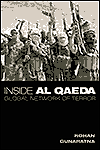|
|
Another Peace Gambit
K. P. S. Gill
Publisher, SAIR;
President, Institute for Conflict Management
It would be tedious to list out how many
times India and Pakistan have 'agreed to talk', and the disastrous
record of failure and recurrent violence. The Indian Prime Minister,
Atal Behari Vajpayee, noted rightly, at the South Asian Association for
Regional Summit Cooperation (SAARC) at Islamabad last week, "History can
remind us, guide us, teach us or warn us. It should not shackle us."
It is, however, not history that 'shackles' India and Pakistan to
violence in Kashmir, but ideology: the unrelenting ideology of extremist
Islam that underlies the creation and existence of Pakistan - expressed
in the two-nation theory that holds that Muslims and non-Muslims cannot
coexist within the same political order - and that fuels the jehad
factories that continue to feed the supply lines of terror across much
of the world. This ideology, and no other legal or historical
entitlement, is the basis of Pakistan's 'claim' on Kashmir; this again,
is why the violence does not end.
Cynicism, however, is not a particularly productive perspective, and it
is useful to examine how the rhetoric of the unscheduled joint
Indo-Pakistan Press Statement,
which hijacked the agenda at the SAARC Summit, is to be assessed. What,
realistically, should be our expectations from the current 'peace
process'?
An examination of the harsh realities of the ground in Jammu & Kashmir
(J&K) provides insufficient evidence of a radical discontinuity with
past trends in terrorist violence. Violence did, of course, decline in
year 2003, as compared to 2002, even as 2002 represented a decline
against 2001 (Total fatalities, 2001: 4507; 2002: 3022; 2003: 2542).
This downward trend is overwhelmingly seen as a consequence of a
radically altered international context, and the increasing difficulty
of managing the internal contradictions of the situation in Pakistan.
There is sufficient evidence in the actions and statements of the
Pakistani state and its leadership, which demonstrates no fundamental
change in ideology, perspective or strategic intent.
Nevertheless, for those who focus intently and exclusively on the
'ground realities', it is sometimes useful to remember that sentiment
itself is part of this ground reality. And there are many, particularly
in the English language Press in India and Pakistan, who believe that
the sentiment has changed in South Asia, and that there is a genuine
desire for peace and coexistence between the people of the two
countries. Little of this was evidenced in the commentaries of the
various Pakistani 'experts' who were allowed to swamp the Indian media
during the SAARC summit, and who exhibited no dilution of the rigidity
and stridency of their positions.
Nor, indeed, does the average Indian believe that there is a possibility
of a lasting peace between the two countries, given the track record of
the past over five and a half decades. Indeed, with the large number of
security personnel who have been dying in action against the
Pakistan-sponsored terrorists in J&K, anger against Pakistan is high
particularly among the rural population, from where most of India's
soldiers are drawn. With each returning coffin, stories about those who
die are repeated in the villages and in marketplaces across the
countryside, and these have deeply influenced the thinking of common
folk.
There are, of course, some voices for peace in Pakistan, and the new
'doves' are most voluble in the English language media. But what is,
again, ignored, is the sentiment of the masses, which finds more
accurate expression in the vernacular Press. Thus, writing after the
Islamabad Summit, one commentator in the Urdu daily, Nawa-e-Waqt,
fumed: "We took a u-turn in Afghanistan to please America; we got our
old friends killed by the Americans, and also killed them ourselves; but
the whole advantage is going to India, and we are being pushed against
the wall… we are going to take another (u-turn) on Kashmir, then,
perhaps, our atomic programme (God forbid) will also be sacrificed to
the u-turn. After so many u-turns, what will the people get?" The
author's 'solution', in brief, was a 'thousand cuts', an old theme in
the strategic community in Pakistan. These are sentiments that have been
widely repeated in the Urdu media in that country. The assembly lines of
the jehad, moreover, are still to be dismantled in Pakistan, and
for the average Pakistani, the country's nuclear arsenal still remains
its primary national asset, reflecting the degree of perversion the
national psyche has undergone.
But the strategy of a 'thousand cuts' against India has failed, and will
hopefully fail wherever else it is tried. The truth is, there have been
very significant transformations in South Asia, though the most
momentous of these may not be the ones that the euphoria of the 'peace
process' carries our attention to.
For one, Musharraf, it must be explicitly recognised, has for some time
now, been in dire need of relief. The international pressure -
particularly after a continuing succession of disclosures relating to
Pakistan's role in nuclear proliferation in North Korea, Iran and Libya,
as well as on the potential leakage of such technologies to non-state
terrorist entities - was becoming unbearable. There is, at present,
almost a report, editorial or article a day in some of the most
prominent American newspapers focusing on Pakistan's transgressions,
both in connection with nuclear proliferation and international
terrorism, as well as on Pakistan's deceit and duplicity with regard to
its purported 'cooperation' with America in the 'global war against
terrorism'. Internally, moreover, a range of economic and political
pressures have been acting on Musharraf, and these peaked in two
apparent attempts at assassination, which seem to have shaken the
dictator's confidence in staying the course on Pakistan's enterprise of
strategic overextension and sponsorship of terrorism.
Under the circumstances, unfortunately, the deal at Islamabad has
virtually let Pakistan off the hook, abruptly restoring a legitimacy
that had steadily been eroded over the past more than two years. Indeed,
the case that India had built against Pakistan over this period has
virtually been dismantled through this single action, and it would be
possible (though he may not choose this course of action in the
immediate future) for Musharraf to continue his support to terrorism in
J&K, even as he projects himself as the first target and victim of
terrorism, creating an impenetrable veil of 'credible deniability' that
will only be gradually worn away by repeated and extreme transgressions.
Worse, it is now clear that, even if there are major acts of terrorism
on Indian soil and their source identified to be located in Pakistan,
the possibility or legitimacy of any strong reaction by India -
including the suspension of talks and 'confidence building measures' -
has substantially been eliminated. Musharraf would simply argue, as he
has in the past, but more credibly now since his position has in some
sense been validated by a 'peace process' with India, that these are
lawless jehadis, acting without any official support, and that
Pakistan and he personally were also targets of the same extremist
elements.
In this, it is useful to understand the degree to which India has
yielded its past position, starting from the 'hardline' adopted during
Operation Parakram. The Prime Minister had said that there would be no
negotiations till Pakistan demonstrably ended support to terrorism and
stopped cross border infiltration; till the infrastructure of terrorism
in Pakistan had been dismantled; till those who were on India's 'list of
20 most wanted' had been handed over by Pakistan. Not one of these
conditions has been fulfilled. But India has entered into talks with
Pakistan now.
Clearly, both parties in the process are, in the main, buying time, and
there is little by way of a concrete strategy for resolution. The most
significant element in this process, in fact, is not any possible set of
'solutions' that may be defined, but essentially the passage of time and
the possible de-escalation of violence in the region while the two
countries engage in 'confidence building measures'. Eventually, Kashmir
will be resolved, not by good intentions and neighbourly values, but by
the necessity of changing circumstances in a world that is growing
impatient with terrorism. There is now at least some evidence of fatigue
and fear in the Pakistani leadership, and an increasing conviction that
the adventurism of the past is not only unsustainable, but would,
indeed, attract extreme penalties. The very existence of Pakistan is,
today, under threat. This, and not the absurd and artificial 'formulae'
that have, from time to time, been proposed for the resolution of the
'Kashmir issue', is the key to the future.
Courtesy:
South Asia Terrorism Portal |


